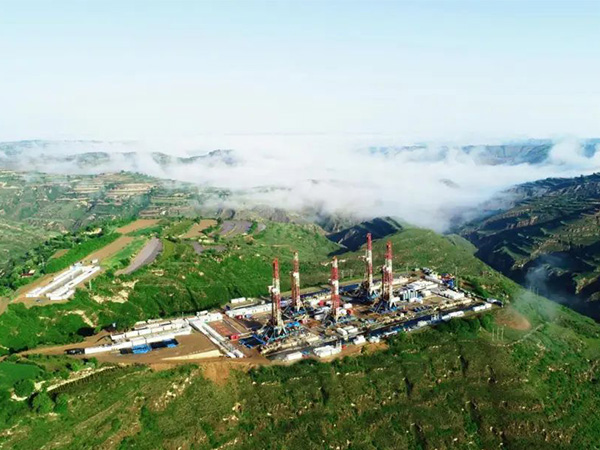The Changqing Heshui Oilfield Accelerates the Profitable Development of Tight Oil

On August 5th, with the successful completion of a horizontal well at the Guping 41-52 well site, the number of wells in the Changqing Heshui Oilfield's tight oil block-level horizontal well three-dimensional development area exceeded 650, making it the largest such development area in China. Since its development, the area has produced over 5 million tons of oil, with a cumulative oil production 6.5 times that of the directional well development area. The production uptime of oil wells has increased by 17% year-on-year, marking a new development path for the efficient development of tight oil.
The Changqing Heshui Oilfield in Longdong, Gansu Province, is a typical tight oil reservoir with rich resources. However, its poor reservoir properties and weak seepage capacity have severely restricted its efficient development, making it extremely challenging to develop. Since its development, the production and research team of Changqing Oilfield has adhered to the principle of equal emphasis on technological and theoretical innovation, gradually overcoming the development challenges of tight oil reservoirs. This has enabled the Heshui Oilfield's tight oil block-level horizontal well three-dimensional development area to achieve stable production for ten consecutive years and continuously increase its annual output by more than 15,000 tons.
In the process of efficient development of horizontal wells, the research team actively transformed the development concept, conducting advanced water injection development with a "five-point" well pattern for 600 to 800-meter horizontal wells. This approach significantly increased the drainage area and made pressure displacement more balanced. They also used volume fracturing to create a three-dimensional "artificial fracture network" system, transforming the tight reservoir into high-conductivity channels, significantly increasing the production of individual wells compared to directional wells. In response to the problems of large vertical thickness of sand bodies, developed interlayers, and low vertical utilization of reserves in some superimposed areas, the Heshui Oilfield aimed for full utilization of reserves and carried out comprehensive technical breakthroughs in geological understanding reconstruction, rock mechanics research, and reservoir modification optimization. They innovated a three-dimensional well location selection method based on parameters such as interlayer thickness and stress difference between reservoir and interlayer, and established two three-dimensional development models: synchronous development in new areas and asynchronous development in old areas. In the key block of Zhuang 211, technicians adopted soluble ball seat volume fracturing and conventional hydraulic jet volume fracturing techniques. After implementing three-dimensional development, they gradually adopted continuous tubing hydraulic jet energy storage fracturing technology, significantly enhancing the production capacity of individual wells.
Through the innovation of development concepts and models, the demonstration area has formed a series of key technologies for horizontal well energy storage, fracturing, and oil displacement integration, including "horizontal wells + water injection development", multi-layer three-dimensional development of horizontal wells, long horizontal well segment close-cut volume fracturing, gas injection energy supplementation, and "3+1" management of horizontal wells. As of now, the Heshui Oilfield has built a 2 million-ton-scale oilfield annually, becoming a demonstration area for the efficient development of tight oil horizontal wells in China National Petroleum Corporation.









 +86-021-67895388
+86-021-67895388 shghfmc@163.com
shghfmc@163.com  93862333
93862333